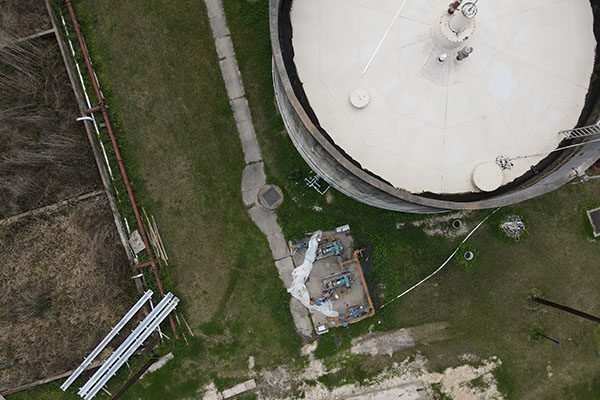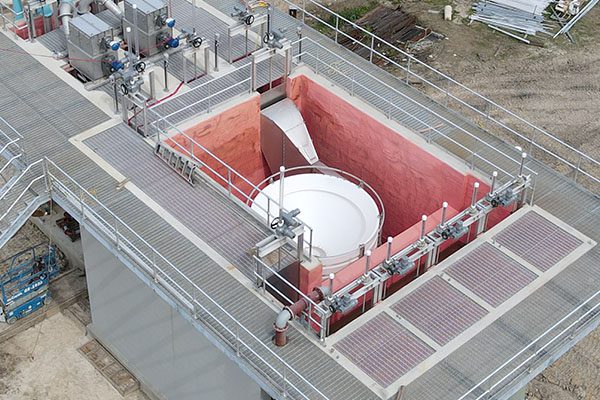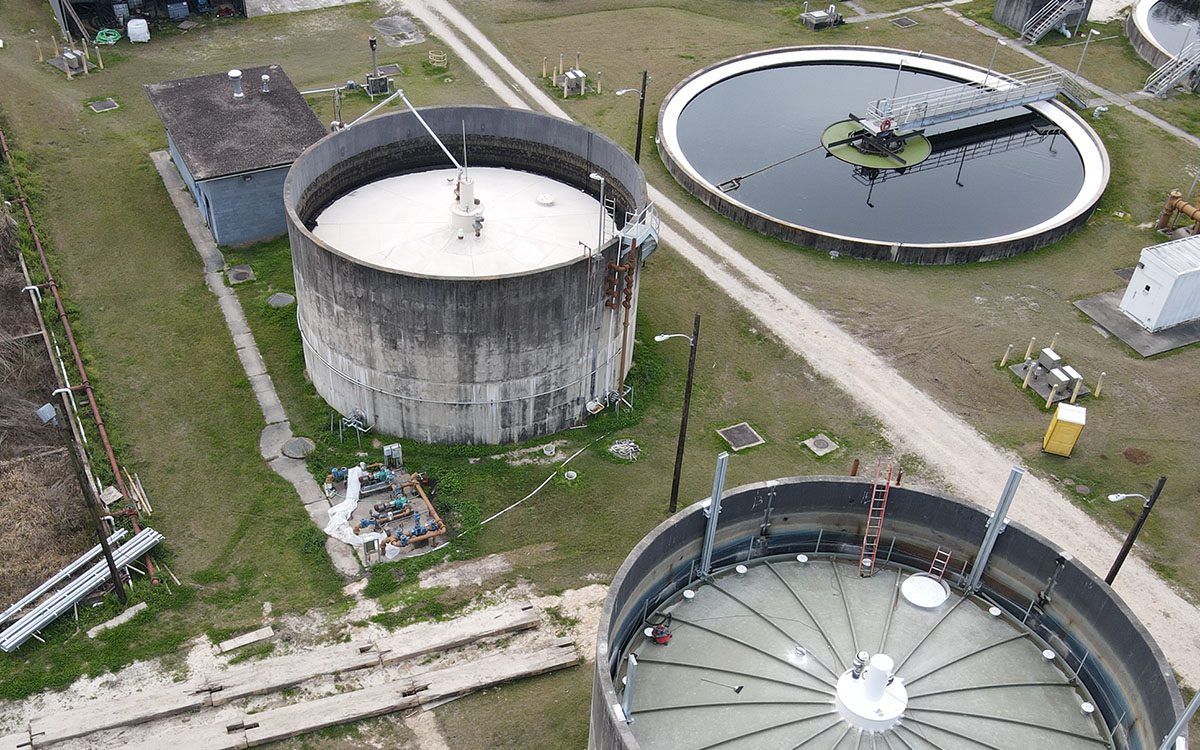How Drones Are Used for Wastewater Treatment Facilities
The use of drones to monitor sewage treatment facilities is becoming more widespread, according to a report from the Association of Sewerage Agencies (ASA). Water utility managers can use them to survey their systems more efficiently and affordably. With aerial photos and video, plant managers can accurately view their utility’s elevated water tanks and hard-to-reach areas.
One of the most common problems in wastewater facilities is overflowing basins that, if left unchecked, can cause harm to the environment and human health. Drone technology helps improve water quality by monitoring facilities more effectively and accurately to help reduce overflows of raw sewage into nearby bodies of water.
One of the most critical and challenging industries for drone technology is wastewater treatment. Many types of pipes and tanks need monitoring, along with multiple pumping stations and valves that must be operated manually or remotely through computer systems.
The factors mentioned above make it difficult for traditional surveillance methods like cameras mounted on towers or poles to capture enough data about these facilities.
Drones can monitor and detect leaks on water mains or sewer lines that can be costly to repair.
Drone inspections help reduce costs and improve plant efficiencies at wastewater treatment facilities.
How does a wastewater treatment plant work?
Water that has been used is wastewater. This includes water from sinks, showers, bathtubs, toilets, washing machines, and dishwashers. Even storm runoff is wastewater. This water can be reused back into the environment, but first, it must be sent through a wastewater treatment plant to be cleaned for obvious health and environmental safety reasons. If the water is not properly cleaned, wildlife and fish populations can be disrupted, human health will be negatively impacted, and oxygen will be depleted.
Wastewater treatment plants must run efficiently to keep up with the water supply and also must undergo rigorous inspections to ensure the water is safe for consumption. There are many health risks involved in running a wastewater treatment plant, and there is also a concern for energy costs while doing this.

Opportunities for Drones in Wastewater Facilities: Flushing out the Data
Using drones is especially helpful in wastewater industries, as they increase worker safety, reduce energy consumption, streamline planning, improve insight and collect samples efficiently.
Inspection
Operators must regularly inspect plants to ensure that wastewater treatment is carried out according to best practices. Drones can be used for this purpose as they provide a bird’s eye view of the whole system, allowing for easy detection of abnormalities.
Drones also cut down on costs and time as traditional inspection methods can take weeks to complete. Drones collect data on site within minutes allowing managers to notice potential problems before they occur and they can also be deployed in dangerous places such as collector and pumping station interiors.
Monitoring
One of the biggest challenges facing wastewater treatment facilities is keeping track of what’s happening inside the plant. If a problem arises, it’s often difficult to know exactly where it started — or how quickly it can spread.
- Monitoring lagoons for leaks, spills and overflows. Drones can fly over lagoons and identify areas where there may be water escaping from the lagoon walls or where there may be large amounts of floating debris (such as leaves) that could lead to an overflow.
- Monitoring landfills. Drones can quickly survey a landfill site, looking for areas where waste is being buried too close to the surface or improperly covered. This can help ensure that leachate doesn’t contaminate groundwater supplies.
- Monitoring equipment performance. If a facility has pumps, valves or other mechanical devices that require regular maintenance, drones can inspect them remotely and determine if they need servicing or replacement before they fail.
Leak Detection
One of the most common problems with wastewater treatment plants is leakage from pipes or other components, which can cause severe problems for humans and the environment. Leak detection using drones can help save both time and money, which would otherwise have been spent on repairing damaged equipment or cleaning up spills due to leakages.
Maintenance
Drones are used for maintenance by inspecting areas such as tanks, pipes, pumps, etc., where it would otherwise be difficult or dangerous for humans to go. Many facilities are in remote areas, so using UAVs makes it possible to survey these structures for more frequent inspections.
Improve testing processes
Drones collect data for water testing within hours compared to traditional methods, which can take weeks. Based on the data, operators can determine where improvements need to be made to comply with government regulations. The real-time insights enhance treatment plants’ efficacy and help avoid failures and disasters.
3D Mapping and Photogrammetry
Plant managers gain important information with highly detailed 3D maps and use photogrammetry for better site surveying. The insights gathered can improve plant management and training purposes.

Five Ways Drones are Changing Wastewater Treatment
1. Increased Safety
Drones enhance the safety and health of wastewater operators and citizens as they allow for more regular inspections and diminish the risks of conducting inspections. They help detect abnormalities quicker to prevent detrimental health concerns.
2. More Inspections and Maintenance
Drone technology allows more frequent water tower inspections that provide actionable condition assessments. Drones help maintenance teams plan maintenance with fewer site visits and help engineering teams plan repairs and modifications.
3. 3D Plant Modeling
Drones provide complete documentation and drawings of wastewater treatment facilities to help management teams better understand the state of existing facilities.
4. Monitor Remotely
Drones with infrared cameras allow scientists, employees of water services companies and government officials to monitor water areas from a distance.
5. Reduce Energy Consumption
Plant managers can use drones to detect energy-saving solutions, such as ceasing water loss or repairing stormwater penetration.
Water, water everywhere
Water is essential for living and daily consumption. Water treatment facilities must provide clean and safe water, a basic requirement for humans and our environment. Running such a crucial operation comes with daily challenges that could lead to detrimental consequences if left untreated. Drone services provide a safe way to streamline and protect the delivery of clean water.


